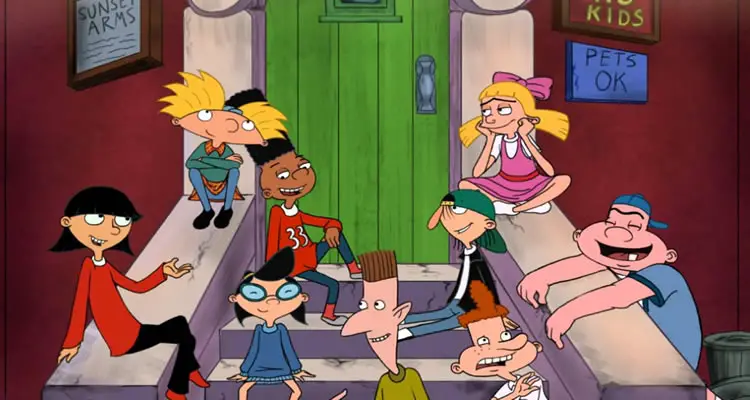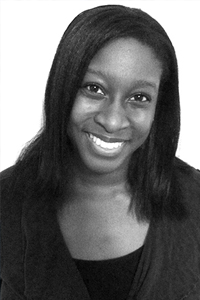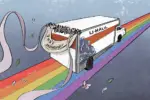The Diversity of ‘Hey Arnold!’
Without viewers even noticing, the show seamlessly blended racial, religious and socioeconomic differences into the characters of P.S. 118.
By Uwana Ikaiddi, University of Central Florida
Imagine this: It’s Saturday morning, and you’re still in your pajamas.
A Pop-Tart in one hand and the remote in the other, you leap onto the couch and check out your favorite weekend shows. Did I also mention it’s still the 1990s?
Reminiscing aside, the 90s were a great time for cartoons that promoted diversity. Between the “Power Rangers,” “Captain Planet” and “The Magic School Bus,” animated television shows highlighted the changing demographics of the time. Most shows featured a range of characters from different backgrounds who worked together and learned from each other.
Unfortunately, shows like these are starting to disappear. Diversity is being replaced by token minority characters. The shift in the demographics of the United States is noticeable. We need shows back that depict diversity. Younger generations shouldn’t assume that minorities are rare or absent altogether. And there’s no better show to bring back in order to promote diversity than “Hey Arnold!”
The cast of “Hey Arnold!” is one of the most diverse to air as children’s television. From African-American to Asian-American, the characters of the show represent the diversity that exists in the urban sections of the U.S. But, this diversity wasn’t limited to race and ethnicity. The show took heterogeneity a step further by depicting various other forms of how kids could be different.
You Can’t Pick Your Family
Arnold Shortman (yes, that’s actually his last name) has had it rough. Orphaned as a baby and raised by his grandparents in a boarding house, saying that the titular character has a rare family situation would be an understatement.
He’s always surrounded by people from all walks of life, including a Vietnamese immigrant, a middle-aged couple and a demolitionist. Although the residents of the boarding house are quite different, they all consider each other family.
This is in direct contrast to the home of Arnold’s bully and secret admirer, Helga G. Pataki. By all accounts, Helga’s home is the more average of the two. The young middle-schooler lives with her mother and father in a spacious house.
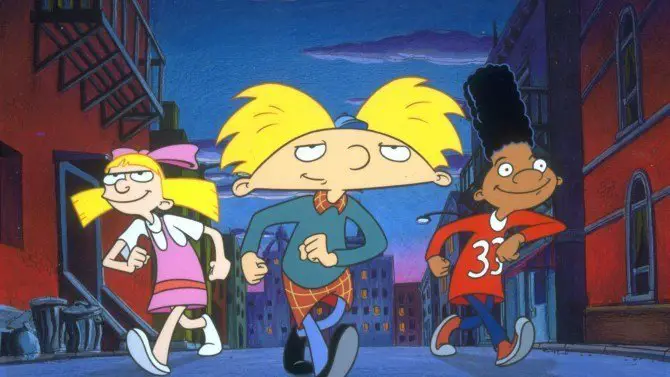
However, this is where the advantages end. The family matriarch is constantly “sleepy” (a sly allusion to her drinking problem) and frequently forgets to pack lunch for her daughter. The Pataki patriarch is a gregarious man who regularly berates his wife and mistakes Helga for his favored child, Olga, who has long since moved away to college.
Despite these stark differences in family life, the two kids are still friendly, with Helga harboring a secret crush for her favorite football-headed classmate. Their differences do not drive them apart; instead, they highlight the fact that such difference can exist without driving wedges between people.
In fact, the differences in their home lives occasionally bring the two closer together through empathy and understanding. The show does an excellent job of helping children look past first impressions and consider what might be going on behind the scenes of someone’s life.
Different Ways to Be Spiritual
Like many cartoons back in the day, “Hey Arnold!” touched on the subject of religious practices. The episode “Harold’s Bar Mitzvah” focuses on Arnold’s classmate, Harold, and his reluctance to become a man. Instead of the typical episode centered around Hanukkah versus Christmas, the episode focuses on Harold’s fear of giving up his childhood.
The 13-year-old doesn’t appreciate the idea of having to be responsible for his actions and taking more authority in his spiritual life. Though the episode shows his initial refusal to attend his bar mitzvah ceremony, Harold proves to be maturing into manhood without realizing it.
While avoiding his ceremony, he discovers a child who lost his mother at the docks and reunites the two. Harold shares his favorite childhood treat with two kids who were fighting over a single popsicle. He also opts to pray instead of getting into a fight with a bully.
When the day ends, Harold realizes that he already abides by the values and practices that his bar mitzvah represents without his rabbi pressuring him. Eventually, Harold returns to synagogue right in time to become a man.
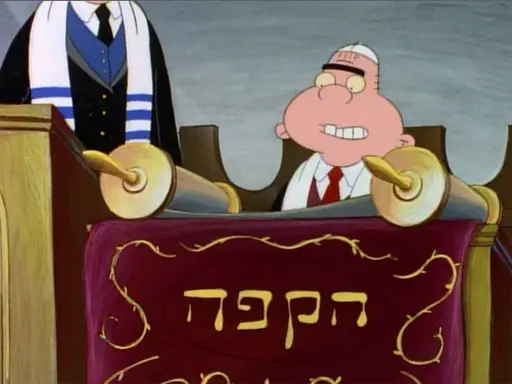
“Hey Arnold!” tastefully deals with the touchy subject of religion during childhood. Harold actually has some doubts about following his own religion. He thinks that being Jewish goes against his want to remain a kid. But, after his rabbi and Arnold point out that Harold doesn’t have to stop doing childish things to become an adult, Harold accepts his religion.
Kids who are going through similar experiences with their own religion can relate to the show and seek assurance that lots of kids go through the same struggles, regardless of religious affiliation.
Check Your Privilege
The kids of P.S. 118 in “Hey Arnold!” all come from different walks of life. A big difference comes in the form of the various socioeconomic circumstances of the children who attend the school.
Rhonda Lloyd represents the affluent, well-educated minority class. Her parents are knowledgeable and live comfortable lives. While Rhonda’s parents would prefer her to attend a private academy surrounded by children as wealthy as her, Rhonda insists on attending public school. She relates to her current friends more than the kids who have never experienced life outside their luxurious bubbles.
Even still, Rhonda’s economic status is vastly different from Arnold’s. Aside from having a room to himself, Arnold must share most of his belongings with the other residents of his grandparents’ boarding house. He barely has any place to be by himself and consistently helps other people with their problems. Despite these differences, Rhonda and Arnold get along fine. Their differences highlight the diversity of their school and the variety of the show as a whole.
Socioeconomic differences are the most relevant of all the examples of diversity “Hey Arnold!” displays. After the election of President Donald Trump, over half of the United States expressed confusion or outrage at the outcome. Most of the population didn’t understand how or why Trump won. In truth, that’s part of the problem.
The divide between the financially privileged suburbanites and struggling rural dwellers couldn’t be more pronounced. And, instead of trying to find common ground with each other, the two sides have sealed themselves deeper into their political and cultural bubbles.
Maybe by exposing younger generations to media that promotes inclusion and understanding, we can prevent such a stark division from happening again.


